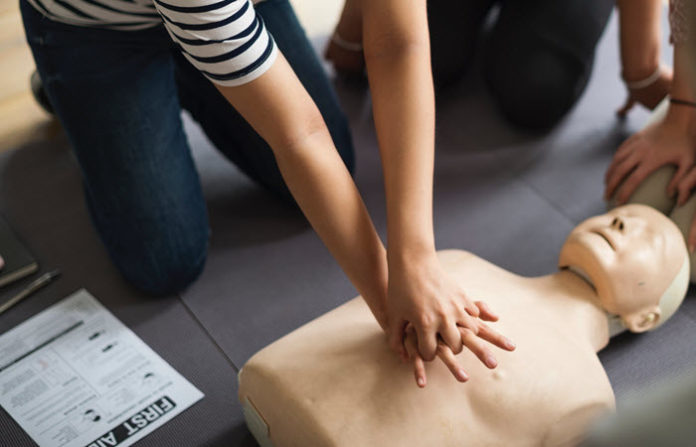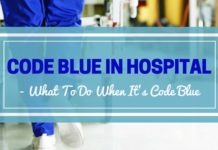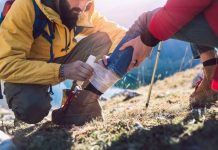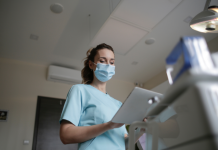It is vital for nurses to know what to do when faced with an emergency. For instance, we should all know what to do with a victim of a road accident or someone with an injury as simple as a burnt finger.
These cases happen every day, and most of the time, nurses are expected to provide first aid care. We should learn not only how to stay as calm as possible, but also what to do while waiting for help to arrive.
1Back to Basics
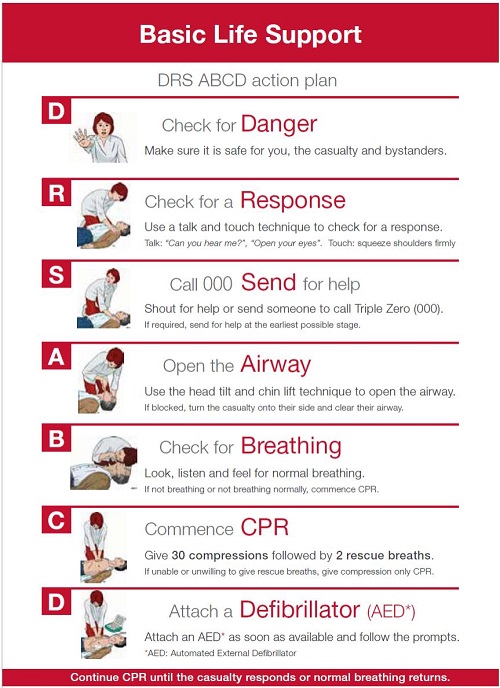
Keep DRS in mind: Danger (check the scene for danger), Response (check for the victim’s consciousness) and Send someone to call for help.
Make sure to survey the scene before doing anything. Before helping a victim, ensure your safety first and then ask someone to call 911. If you are alone, shout for help, perform first aid, and then find someone to call 911.
Also, remember the ABCDs in giving first aid: Check the victim’s Airway, Breathing, perform CPR (if necessary)/ Control major bleeding and Defibrillate, if available (and if necessary). Is the victim’s airway (mouth and throat) free from foreign objects that may cause blockage? Is the victim breathing? Does the victim have severe bleeding?
The three P‘s must also be kept in mind when giving first aid. These are the responsibilities of every first aider: To Preserve life and give initial emergency care and treatment to people who are sick or injured, to Protect unresponsive/ unconscious people, to Prevent the condition of the victim to worsen and to Promote the victim’s recovery.
See Also: Top 10 First Aid Facts and Fallacies
2Bleeding Wounds
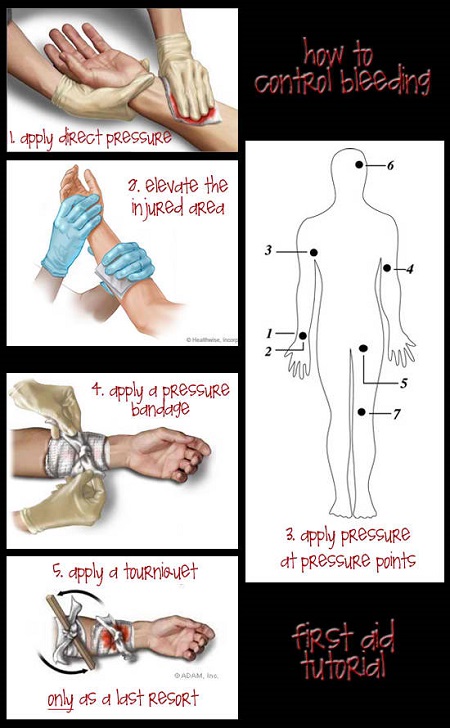
Cuts and scrapes need proper care to avoid infection or complications. The first things you should do are to clean the wound and stop the bleeding.
- It is best to rinse the wound with cool water. Thorough cleaning reduces the risk of infection and certain complications like tetanus.
- Remember that you have to stop bleeding by applying gauze or a clean piece of cloth to the wound firmly but gently.
- You can add more gauze if blood soaks through, and continue applying pressure.
Puncture wounds, cuts, scrapes or amputations may cause external bleeding that needs immediate medical attention. If you can stop, or at least lessen, the bleeding until help arrives (Call 911), the patient’s chances of surviving may increase tremendously.
- Prior to giving care, make sure that you don protective gloves or any barrier between you and the patient that can minimize transmission of disease.
- Bleeding may be controlled with direct pressure. You can use a sterile dressing, a clean piece of cloth, diaper or a sanitary napkin.
- Do not remove the dressing even when it gets soaked with blood. Instead, add more material and continue pressure.
- Do not move limb if you suspect any fractures. Otherwise, elevate the wound higher than the level of the heart.
- As soon as bleeding is controlled, apply dressing and observe for shock.
3Nosebleed
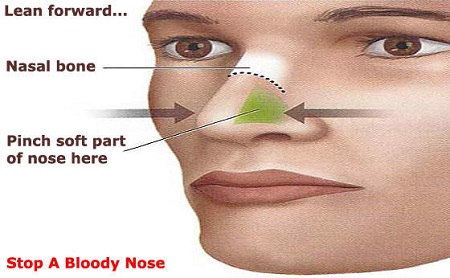
Nosebleeds are very common, and are usually caused by dryness, allergies, infection, increased blood pressure and aggressive nose picking among others.
Bleeding from the nose for more than twenty (20) minutes may be considered a medical emergency and immediate medical attention is necessary.
- To help someone whose nose is bleeding, assist him to sit upright and lean forward. This will help in reducing the blood pressure in the veins of the nose, thus, minimizing the bleeding. Also, leaning forward is necessary to prevent the victim from swallowing the blood.
- Squeezing the soft part of the nose using the thumb and the index finger for about ten to fifteen minutes or placing an icepack on the bridge of the nose may also help stop the bleeding.
4Choking

There are two types of airway obstruction, one of which is the partial airway obstruction wherein the breathing is labored or noisy and some air may be felt from the mouth. The other type is the complete airway obstruction wherein no air can be felt escaping the mouth.
- Usually, in a partial airway obstruction, coughing may help expel the foreign object.
- If it is a complete airway obstruction and the victim is conscious, you have to call for help first (Call 911) before performing up to five back blows with the heel of one hand in the middle of the victim’s back, just between the shoulder blades.
- If the back blows did not work, you can move on to performing up to five chest thrusts (or the Heimlich maneuver), which is similar to chest compressions, but sharper and must be delivered at a slower pace.
5Unconsciousness

- Call for help (Call 911), but never leave the victim unattended.
- If the victim is not responsive, start checking his ABCD’s.
- If they are all negative and if you are a qualified person, perform CPR.
- Otherwise, place the victim on a side-lying position to promote drainage of secretion from the mouth.
- While waiting for help to arrive, cover the victim with a blanket to prevent shock.
6Shock
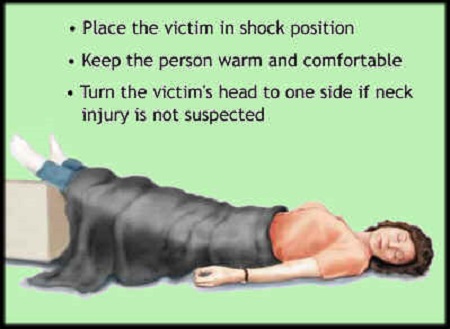
When the organs and tissues in a person’s body are not receiving enough flow of blood, that person is susceptible to shock.
- Seek medical attention first (Call 911), and check the victim’s ABCDs.
- Make sure to manage any bleeding, if present, by applying direct pressure and elevating the site.
- If possible, let the victim raise his legs and feet (shock position) and make sure to keep the patient warm and comfortable.
7Head Trauma

A head trauma may cause a temporary loss or altered level of consciousness which occurs after an impact to the skull area. The victim may also experience blurred vision, nausea, and confusion.
- Ask for help (Call 911) and check the victim’s ABCDs.
- If the patient is not responding, but is breathing adequately, put him in a side-lying position.
- Make sure to support the victim’s head and neck to prevent injury.
8Burns
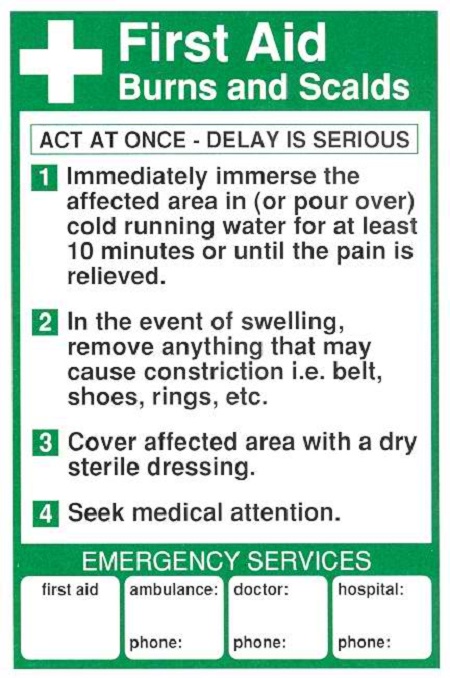
There are three C’s in managing most types of burns:
- Cool – You can use flowing water for fifteen to twenty minutes. Chemical burns need to be washed for up to an hour.
- Clear – You should remove anything that isn’t sticking and may keep burning. Make sure that the site is free from jewelries and clothing that may be contaminated by chemicals.
- Cover – Dress the burn with a non-adherent dressing.
9Poisoning

- Seek for medical attention (Call 911) immediately.
- Consider your own safety first before anything else.
- Check for the victim’s ABCDs.
- If the victim is not responding, but is breathing adequately, assist him to a side-lying position.
- Never give anything by mouth or try to induce vomiting unless instructed by a physician.
- Try to identify what has been taken, how much and when it was taken, while making sure that you maintain your safety.
10Bee/Wasp/Hornet Stings
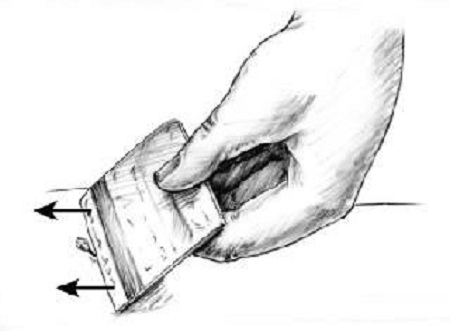
Insect stings usually cause pain and swelling. Stings may be considered an emergency, especially if the victim experiences an allergic reaction.
- If the victim is experiencing difficulty of breathing, abdominal pain, facial swelling and has signs and symptoms of shock, the first thing you should do is to call for help (Call 911), and assess the patient’s ABCDs.
- If possible, remove the stinger by scraping it off.
- Loosen the victim’s clothing and check if he has medications for his allergies.
- Assist the victim to a side-lying position to prevent him from choking if ever he vomits or bleeds through the mouth.
- If the victim is unconscious and has no signs of breathing, perform CPR.
11Cardiac Arrest
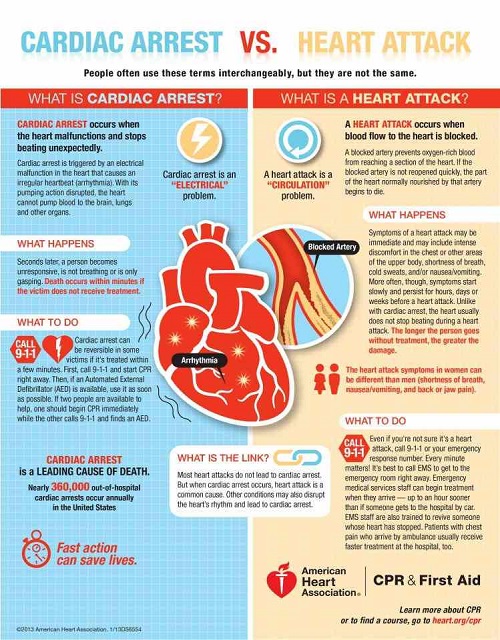
A person can still be revived during a cardiac arrest, but the more time that passes, the more unlikely that the victim will be revived.
- The most effective first aid treatment for a cardiac arrest is CPR.
- Before performing CPR, make sure that you have already asked for immediate medical attention (Call 911) and that you have assessed the patient’s ABCDs.
- A person in cardiac arrest will lie motionless without breathing, and will not be able to respond to any questions or stimulation.
- If the victim is unresponsive, turn him on his back and assess if breathing is completely absent. You can use the “look, listen and feel” approach: Look if the person’s chest is moving up and down, listen to any sounds of breathing and feel for air passing through the victim’s nose or mouth. If breathing is negative, check for airway blockage in the mouth and throat.
- Proceed with CPR immediately.
12Heatstroke
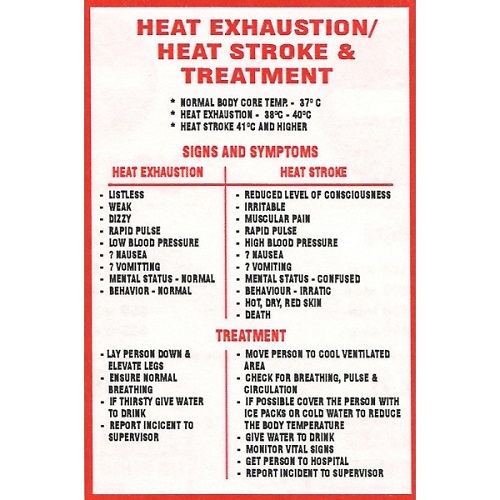
As the most severe form of heat-induced illness, heatstroke should be taken seriously. It is a very life-threatening condition that results in extremely high body temperature, thus causing many organ systems to fail.
- Seek for immediate medical attention (Call 911).
- While waiting for help, make sure to cool the victim’s body immediately.
- Wrap the person in cold, wet bedding or clothing.
- He may also be immersed in a lake, stream or a bathtub filled with cool water.
13Animal Bites
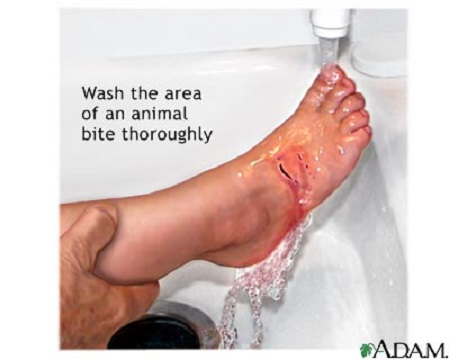
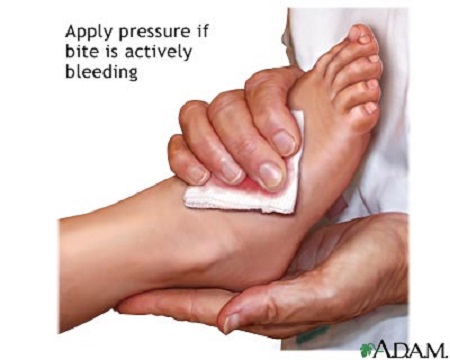
Around 10 to 20 people, mostly children, die from dog bites every year. Dog bites are usually ragged and torn in appearance. Cat bites, on the other hand, involve deep puncture wounds that, most of the time, become infected.
Cats don’t normally bite though, unless they are restrained or when you attempt to intervene in a cat fight. Domestic animals like horses, pigs and cows, do not bite often, but when they do, serious wounds may result.
- After being bitten, the offending animal must be penned by its owner. Otherwise, the proper authorities must be notified so that they can observe the animal for signs of rabies.
- The victim must see a doctor immediately after receiving first aid treatment.
- The first aid involves controlling the bleeding and washing the wound thoroughly under running water for a few minutes.
- Never put anything on the wound, and do not cover it to prevent infection.
14Near Drowning
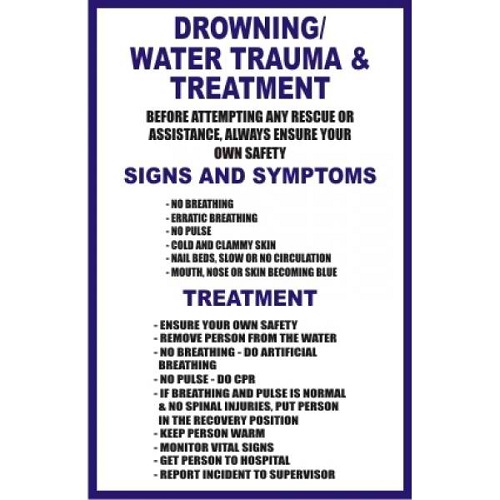
Near drowning is when a person suffers from severe oxygen deprivation while submerged in water, but not resulting in death. Otherwise, the term used is drowning.
When a person suffers near drowning, water may enter the lungs, causing them to cease transferring oxygen to the blood.
- Seek for immediate medical attention (Call 911) and perform CPR at once.
- Make sure not to move the victim’s head and neck, so as to prevent spinal injury.
- The victim must be transported to a nearby hospital immediately.
15Eye Injuries
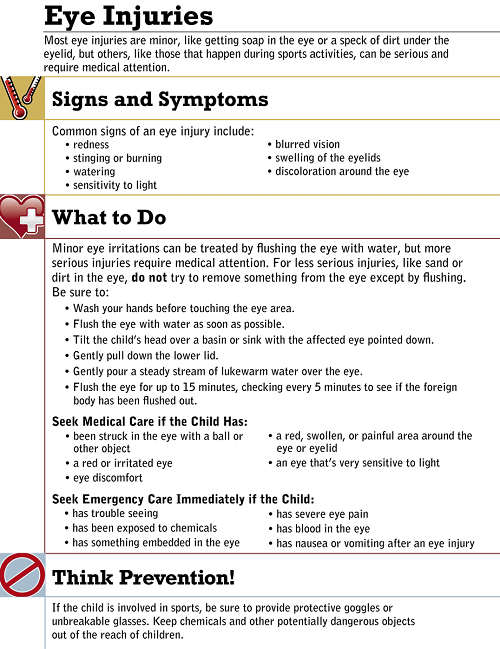
The eyes are well-protected from injury by the structure of our face and with the help of our eyelids. Nonetheless, injuries are still possible, some to the extent that vision is lost, or, in rare cases, the eye must be surgically removed.
- Before helping a person with eye injury, make sure to seek for medical attention (Call 911) immediately.
- If the injury is caused by a blunt impact, ice packs may help reduce swelling and ease pain.
- Do not remove the object if it is impaled in the eye.
- Do not rub or apply any pressure to the eye either, as this may cause further damage to the injured eye.
- While waiting for help, cover both eyes with sterile dressings to minimize the injured eye’s movement.
16Asthma Attack
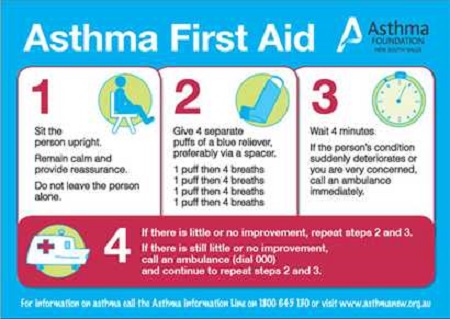
There are many factors that may trigger an asthma attack. Upper Respiratory Tract Infection, stress, pollen, molds and changes in air temperature are only a few. Asthma attacks are characterized by difficulty of breathing and speaking, shortness of breath, cyanosis and wheezing.
- Assess the patient’s ABCDs and seek for immediate medical attention (Call 911).
- Help the victim sit upright, leaning forward or supported.
- If the victim has their medication, assist them in following their asthma plan.
- If the victim stops breathing and becomes unresponsive, follow DRS, assess ABCDs and immediately perform CPR.
17Fractures

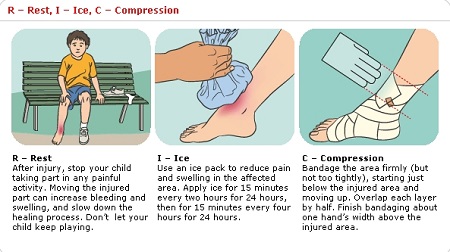
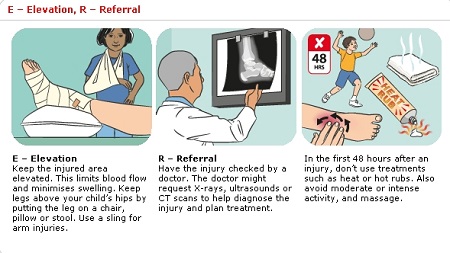
The most important focus in managing fractures is to stop any bleeding. Fractures may cause pain at the injury site, bleeding, deformities, tenderness, swelling and, often, inability to move.
- Seek immediate medical attention and check the victim’s ABCDs.
- Control any bleeding by applying direct pressure and by elevating the injury site.
- Ice packs may be used for closed fractures to lessen pain and swelling.
- Immobilize or minimize movements of the injury site to avoid further injury.
18Spinal Injury
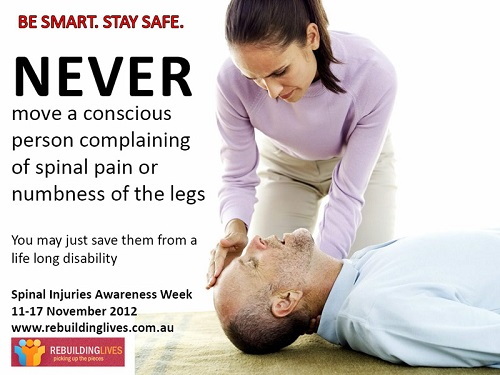
You have to assume that a person has a spinal injury if there is an evidence of head injury. This may result to unresponsiveness, headache, nausea and vomiting, paralysis or convulsions.
- If you suspect that a person has a spinal injury, make sure to seek for medical attention (Call 911) immediately.
- Check the victim’s ABCDs and keep the person still by placing towels on the sides of the neck to prevent movement.
- Control the bleeding, if present.
- If the victim is wearing a helmet, do not remove it.
- You will need help from another person if it is vital to move the victim because he is vomiting or choking on blood, or if he is at risk of further injury.
- One person must assist the head, and the other one must be along the side of the victim. Both of you should work together to keep the victim’s head aligned with the neck and the back while rolling him onto his side.
19Drug Overdose

Whether it’s accidental or intentional misuse, a drug overdose requires immediate medical attention. Its signs and symptoms depend on a wide range of factors. In general, however, the general symptoms you may observe include:
- loss of balance
- confusion
- breathing difficulties or not breathing at all
- snoring deeply
- skin turning blue
- nausea
- vomiting
- drowsiness
- seizures
- coma
If you suspect someone has taken an overdose, try to remain calm and call an ambulance on 000. If the patient is unconscious but shows signs of breathing, carefully place him on his side. Tilt his head back and lift the chin to ensure that the airway remains open. Avoid making the patient vomit or ask him to eat or drink. If you see any pill container in the area, take it to the hospital.
20Hypothermia
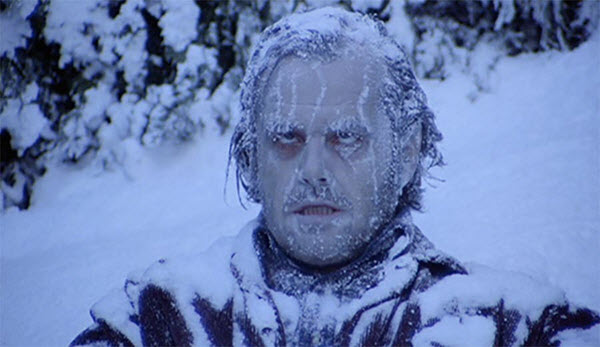
Hypothermia is considered a medical emergency. It happens when the body loses heat faster than it’s able to produce heat, resulting in dangerously low body temperature. If not treated right away, it can cause confusion, coma, and even death.
If the patient is exposed to a really cold temperature outside, get the patient indoors. Remove any wet clothing as needed and help the patient dry off. Make sure to warm his trunk first and not his hands or feet. Doing that can cause shock. Avoid immersing the patient in warm water as rapid warming can produce heart arrhythmia.
If the patient isn’t breathing, start performing CPR immediately while waiting for emergency help to arrive.
21Chest Pain

There are several causes of chest pain. It can vary from indigestion to heart attack and pulmonary embolism.
To help someone experiencing chest pain, assist him in a comfortable position. Assess and monitor his breathing and responsiveness. If the pain doesn’t go away, it’s best to take the patient to the hospital.
Also, you need to instruct the patient not to drink or eat anything. Do not give him another patient’s medication unless prescribed by a doctor. Never leave the patient alone.
Sources:
- The Merck Manual of Medical Information, Second Home Edition
- http://www.mayoclinic.org/first-aid
- http://www.betterhealth.vic.gov.au/bhcv2/bhcarticles.nsf/pages/First_aid_basics
- http://www.cdc.gov/niosh/npg/firstaid.html
- http://www.grainger.com/content/qt-safety-basic-first-aid-procedures-207
- http://www.ehs.iastate.edu/sites/default/files/uploads/publications/miscdocs/emergency-firstaid-orientation.pdf
- http://www.springfieldfas.org/tips-basicfirstaid.pdf


